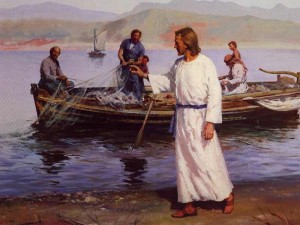 Last week Rorate Caeli published a provocative post entitled, “How has that been working out?” to mark the 40th anniversary of Pope Paul VI’s apostolic exhortation Evangelica Testificatio, on the renewal of religious life according to the teaching of Vatican II.
Last week Rorate Caeli published a provocative post entitled, “How has that been working out?” to mark the 40th anniversary of Pope Paul VI’s apostolic exhortation Evangelica Testificatio, on the renewal of religious life according to the teaching of Vatican II.
It’s a very good question, and the turbulence and decline of the past 40 or so years give the question a bit of an edge, leading some to place the “blame” for this (and anything else they don’t like about the “post-conciliar” Church) on Vatican II and Pope Paul VI.
There’s a lot to be said about all this, and we can have different opinions about the Church, the state of religious life, etc. I would, however, like to give just a few ground rules for the discussion as faithful Catholics.
(1) The Second Vatican Council (1962-65) was a legitimate ecumenical council of the Church, and if one is not careful, one can be on the outside looking in if he/she goes too far in trying to minimize the Council’s authority or teaching, or in second-guessing the actions of Pope Paul VI. One does far better to adopt Pope Benedict’s “hermeneutic of continuity” in that regard.
(2) While this isn’t de fide, it’s probably misguided to think that Vatican II wasn’t necessary and that the post-WWII world and Church were just fine as they were.
(3) “Renewal” is always a good thing, and when it comes to the Church as a whole, renewal does not usually happen overnight.
(4) Sinful mankind is always part of the equation (one of the reasons “renewal” takes awhile!), but it’s subordinate to the grace of the Holy Spirit through which God continually breathes new life into His Church.
(5) The “renewal” of religious life called for at Vatican II and discussed in Pope Paul VI’s apostolic exhortation has continued, despite the setbacks. Those documents need to be read in continuity not only with what came before, but also in continuity with subsequent exercises of the Magisterium, most notably the Synod of Bishops that culminated in Pope John Paul II’s 1996 apostolic exhortation Vita Consecrata.
(6) We do well to look forward in hope, as we “put out into the deep” (Luke 5:4) in the new millennium, focusing on all the good that’s happening in the Church, and in particular in religious life. In that regard, the Institute on Religious Life has been a singular voice in upholding the goodness, beauty, and enduring truth of the Church’s living tradition as it relates to the consecrated life.
Like this:
Like Loading...
 Earlier this month, fittingly on June 9th, the feast of the holy deacon St. Ephrem of Syria, Bishop Alexander Sample of Marquette, Michigan issued a pastoral letter entitled, “The Deacon: Icon of Jesus Christ the Servant.” This pastoral letter is a welcome contribution to the body of teaching on the permanent diaconate, which has been restored in the West since the Second Vatican Council (1962-65).
Earlier this month, fittingly on June 9th, the feast of the holy deacon St. Ephrem of Syria, Bishop Alexander Sample of Marquette, Michigan issued a pastoral letter entitled, “The Deacon: Icon of Jesus Christ the Servant.” This pastoral letter is a welcome contribution to the body of teaching on the permanent diaconate, which has been restored in the West since the Second Vatican Council (1962-65). Last week Rorate Caeli published
Last week Rorate Caeli published 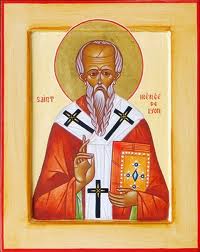 The following is taken from the
The following is taken from the 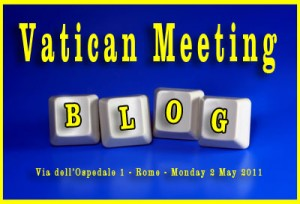 Nearly two months ago, we reported on the
Nearly two months ago, we reported on the 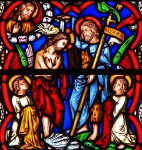 Today is the tenth birthday of my son
Today is the tenth birthday of my son  The following
The following 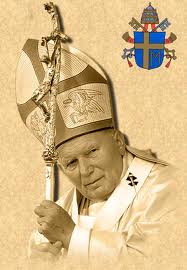 This past weekend, awakened by a persistent thunderstorm, I starting browsing Catholic sites and came across two excellent vocation-related blogs not previously mentioned here.
This past weekend, awakened by a persistent thunderstorm, I starting browsing Catholic sites and came across two excellent vocation-related blogs not previously mentioned here.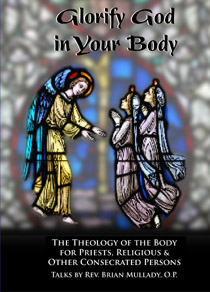 Blessed John Paul II has given the Church a great gift in his profound teaching on the theology of the body. The Holy Father emphasized that traditional Catholic teaching on marriage and the family is not in any sense rooted in a contempt for matter or for the body, but on the Incarnate love of the Trinity. This teaching not only helps us understand the Church’s teaching on hot-button issues such as divorce, contraception, and homosexulity, but also the gift of consecrated virginity or celibacy for the sake of the kingdom, as a complete gift of self to God.
Blessed John Paul II has given the Church a great gift in his profound teaching on the theology of the body. The Holy Father emphasized that traditional Catholic teaching on marriage and the family is not in any sense rooted in a contempt for matter or for the body, but on the Incarnate love of the Trinity. This teaching not only helps us understand the Church’s teaching on hot-button issues such as divorce, contraception, and homosexulity, but also the gift of consecrated virginity or celibacy for the sake of the kingdom, as a complete gift of self to God.  Cardinal Raymond Burke said he thinks often about his humble upbringing in rural Wisconsin and where his Catholic faith has taken him during his lifetime.
Cardinal Raymond Burke said he thinks often about his humble upbringing in rural Wisconsin and where his Catholic faith has taken him during his lifetime.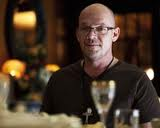 Dennis Narlock has cooked for Hollywood stars and built a well-known local catering business throughout the past three decades. But Narlock plans to walk away from his business and his cooking career at the end of the year. He says he will also give up his personal wealth and all his worldly possessions after joining a recently established Franciscan monastery in the Diocese of Fargo.
Dennis Narlock has cooked for Hollywood stars and built a well-known local catering business throughout the past three decades. But Narlock plans to walk away from his business and his cooking career at the end of the year. He says he will also give up his personal wealth and all his worldly possessions after joining a recently established Franciscan monastery in the Diocese of Fargo.